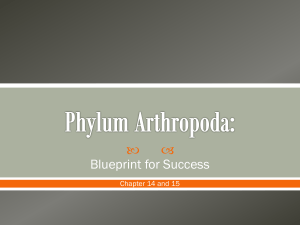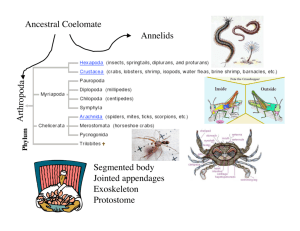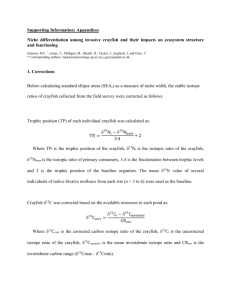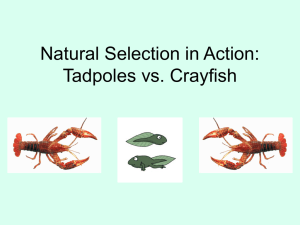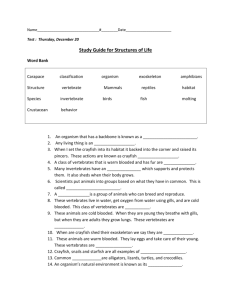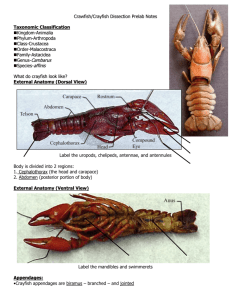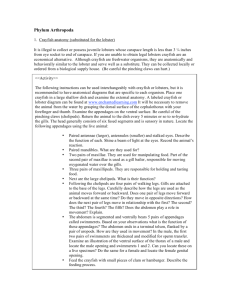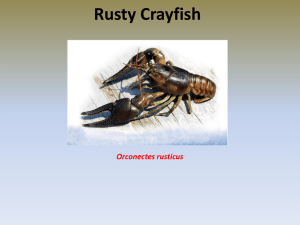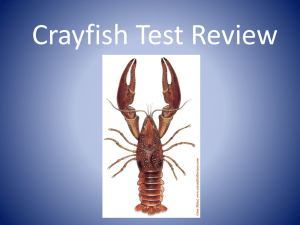Zoology B Terrestrial Mandibulates Test
advertisement
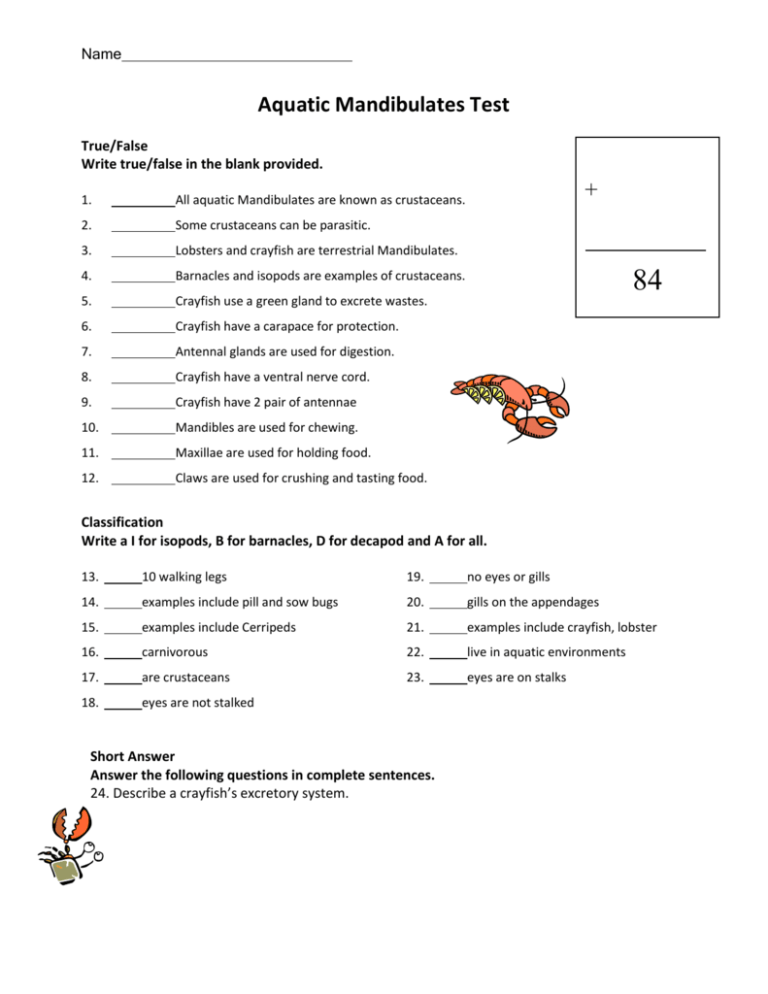
Name Aquatic Mandibulates Test True/False Write true/false in the blank provided. 1. All aquatic Mandibulates are known as crustaceans. 2. Some crustaceans can be parasitic. 3. Lobsters and crayfish are terrestrial Mandibulates. 4. Barnacles and isopods are examples of crustaceans. 5. Crayfish use a green gland to excrete wastes. 6. Crayfish have a carapace for protection. 7. Antennal glands are used for digestion. 8. Crayfish have a ventral nerve cord. 9. Crayfish have 2 pair of antennae 10. Mandibles are used for chewing. 11. Maxillae are used for holding food. 12. Claws are used for crushing and tasting food. + 84 Classification Write a I for isopods, B for barnacles, D for decapod and A for all. 13. 10 walking legs 19. no eyes or gills 14. examples include pill and sow bugs 20. gills on the appendages 15. examples include Cerripeds 21. examples include crayfish, lobster 16. carnivorous 22. live in aquatic environments 17. are crustaceans 23. eyes are on stalks 18. eyes are not stalked Short Answer Answer the following questions in complete sentences. 24. Describe a crayfish’s excretory system. Name Per. Completion Complete the sentences/phrases below. 25. All appendages on crustaceans are branches. which means they have two main 26. Crayfish have three pairs of jaw-like feet called and handle food. 27. Crayfish have a digestion. which help to touch, taste gland that helps to mix food with digestive enzymes during 28. Crustaceans have a which is a fused head and chest region. 29.This gland regulates salt content in crustaceans. 30. Crustaceans bodies are covered by a which is used for protection. 31. These types of receptors are used for equilibrium, balance and position Lab Practical Use the crayfish positioned in the back of the room to answer the following. 32. 33. 34. 35. 36. 37. 38. 39. 40. 41. 42. 43. 44. Name Per. Animal Picture Identification Identify each animal below as: crayfish, lobster, barnacle, or isopod. 45. 46. 47. 48. Name Per. Terrestrial Mandibulates Test Classification Determine what CLASS the following describe. M=Merostomata A=Arachnida B=both 49. horseshoe crabs 52. 50. have six pairs of appendages 53. 51. spider, ticks, mites 54. C=Chilopoda D=Diplopoda unsegmented bodies with a broad abdomen contain fangs for eating feed at night on worms/mollusks I=Insecta 55. butterfly 60. herbivorous 56. millipede 61. 57. centipede 62. most numerous and diverse group three pairs of legs 58. less active, nocturnal 63. head, thorax, abdomen 59. active predator True/False Write true or false. 64. The Subphylum Uniramia contains insects. 65. The Subphylum Arachnida contains spiders. 66. Millipedes have two pairs of appendages per abdominal segment. 67. Malpighian tubules are used for excretion and to retain water. 68. 69. Terrestrial Mandibulates have complex muscular system with both striated and smooth muscles. The digestive tract of insects has a foregut, midgut and hindgut. 70. Terrestrial Mandibulates have an open circulatory system. Name Per. 71. Respiration in insects occurs only through spiracles. 72. An exoskeleton can limit the growth of an insect. 73. Grasshopper have separate sexes. Short Answer 74-75. What are the three organs Terrestrial Mandibulates can use to retain water? 76-77. Explain how a mite/tick is different from an insect. (Give at least two differences.) Animal Identification Identify each animal below as: spider, tick, mite, butterfly, beetle, centipede or millipede. 78. 79. 80. Name 81. 82. 83. 84. Per.

